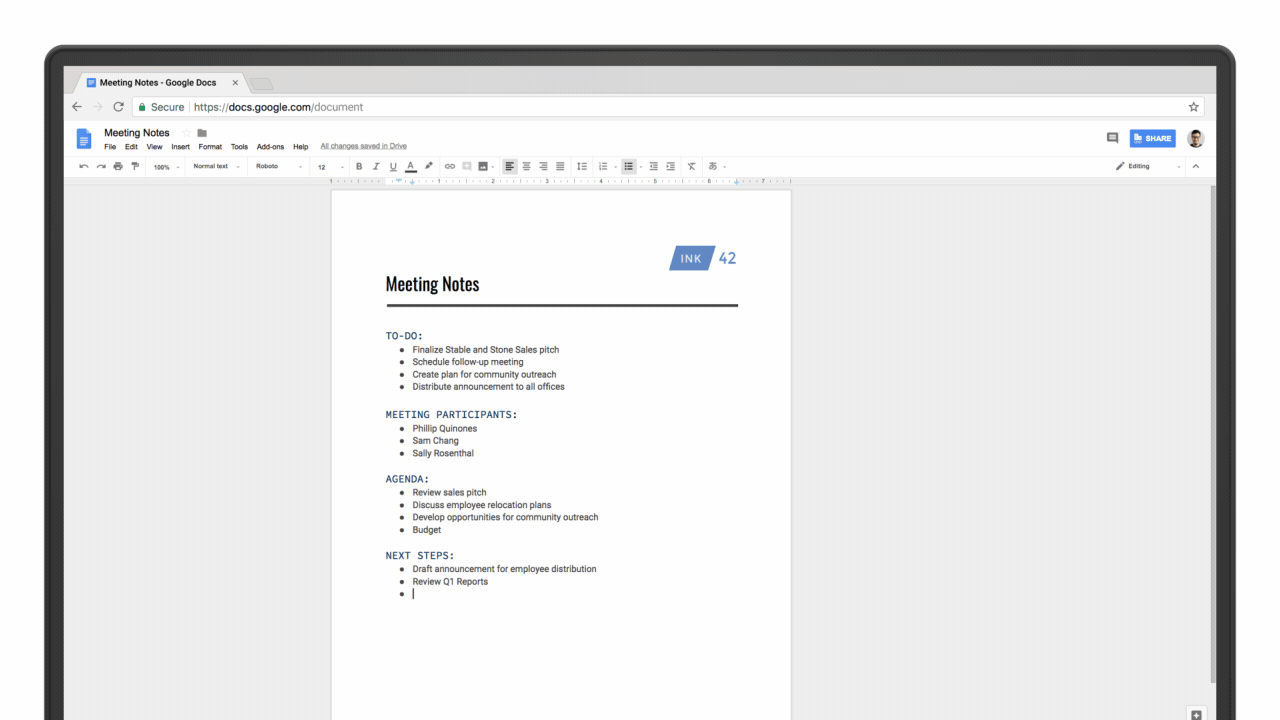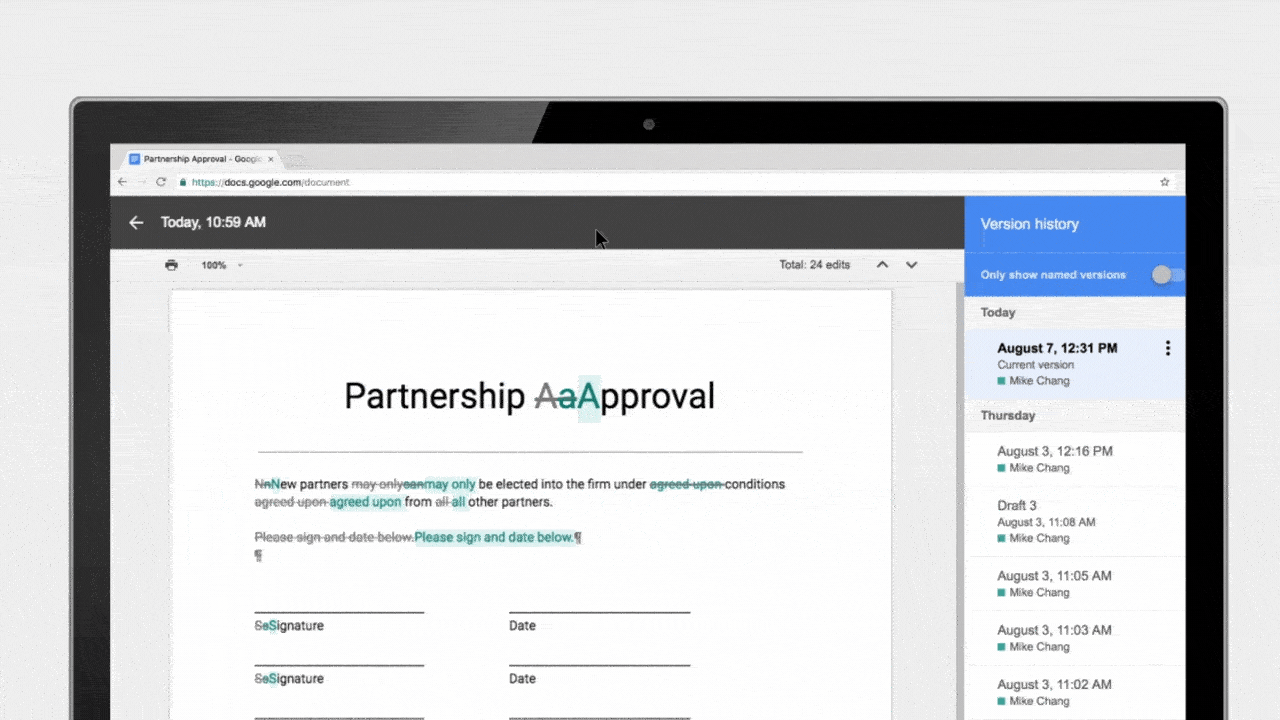4 side effects of using legacy productivity software (hint: your work suffers)
Diane Chaleff
Group Product Manager, Google Cloud, Office of the CTO
Editor’s note: Diane Chaleff works for Google Cloud’s Office of the CTO. She works with customers to create a culture of innovation in their companies with technology.
“Collaboration” is one of many buzzwords in the SaaS world that's taken on a variety of meanings. But in my opinion, collaboration does have a specific meaning at work. While it might not be easily defined in words, you recognize “good” and “bad” collaboration when you see it. For example, meeting a deadline with time to spare (good), versus when a “three-month” project balloons to eight months (bad).
In the times when collaboration falls flat, we typically make excuses for people or processes (“so-and-so was unavailable” or “we weren’t given the resources we needed to succeed”). But what about technology? Nowadays, technology is so central to our work that it should also be held accountable for enabling, or hindering, how we work.
Here are some side effects I’ve observed when businesses use technologies that weren’t built for collaboration from the start.
1. People don’t contribute.
If you’re on a large conference call, it’s likely not the best time to suggest a minor change. The same is true for sharing documents back and forth over email. If someone shares a presentation and you notice a small edit that needs to be made, you might not feel comfortable replying and re-attaching a new version to a bunch of people.
So what do you do? You keep your thoughts to yourself. Too easily the attitude becomes, “hopefully someone else will catch it in the next round of edits,” or “there are a lot of senior people on this thread; I don’t want to be the 100th email they wake up to.” This is a risk for businesses because ideas go unshared and problems go unsolved.
Organizations need their collaboration tools to mimic how people actually like to work together, and this requires having flexible mediums. Email may not be the place to call out a minor change, but adding a comment in the document or sending a ping over a chat thread might be. The same goes for more confidential conversations—meeting face-to-face may be the better alternative. G Suite gives users the flexibility to make contributions where it makes sense.
2. Things get lost in translation.
Let’s say you’re editing a document and someone asks you to make a change to “the third sentence in paragraph seven.” After scrolling and counting, you cross your fingers and hope you’re looking at the right thing. Similarly, what if I asked you to change the blue section of the following image to be grey? You might ask yourself, “which blue section?” These kinds of exchanges happen all the time at work.
Interpreting requests like these takes a lot of cognitive effort and can cause unnecessary confusion. To further complicate things, you might receive instructions like these over email, which means you have to flip between an email and the document to make the change. Now you’re working in two different places to do one task.
Now you’re working in two different places to do one task.
This kind of context switching is distracting. It’s so much easier to communicate directly—to a specific person—on the paragraph or
image in a document, just like you can in Google Docs, Sheets, Slides or many other file types.


3. Outdated documents just won’t die.
Next up, the always-present “version roulette.” How many times have you edited a document only to find out that you’re working on an older version? Not only is this an obvious waste of time, but sharing old information as if it’s new makes others second-guess the state of a project: They may wonder: “why are we talking about something that the team has already moved past?” Or “Does this mean that the topic is up for discussion again?” Not only have you worked on the wrong thing, but you now have to spend more effort course-correcting.
Versions exist so that we don’t lose ideas. As a business, you want every keystroke to be tracked so that the thinking behind those ideas gets saved. As a user, you just need to be sure that the file you’re working on is the most recent copy so you can do your job right. G Suite does both.


4. People wait until their work is “perfect” to share it.
One of the biggest traps of traditional productivity software is that it trains you to feel like everything you create should be final. There’s a false sense of permanency when you send an email with an attachment, like there’s no room for error or edits. Instead, to avoid criticism, people wait to share information until it’s in a perfect state and this slows down work.
The most valuable input you can receive on a project is feedback related to the core idea—before you ever get started on execution. If you wait to get input on a proposal until it’s near-final, only to learn that the strategy was faulty to begin with, what was the point?
There is a time and a place to present polished work. Make sure your productivity technology encourages early-stage collaboration, so that you engage colleagues from the get-go and give your ideas the chance to shine.
Don’t sell yourself short
When it comes to collaboration, technology can subtly encourage positive—or not-so positive —behavior. Good productivity technology encourages us to approach work as if it belongs to the group, not the individual. It motivates us to share our work early and often (even if it’s not perfect), so that we can get help from peers. And it offers flexibility and built-in machine intelligence, so we can work the way we prefer and skip mindless tasks when it makes sense.
Good technology fosters the culture of collaboration we want to see in our workplace. We built G Suite with this in mind so that teams can make the most of their ideas, and their time, together.

